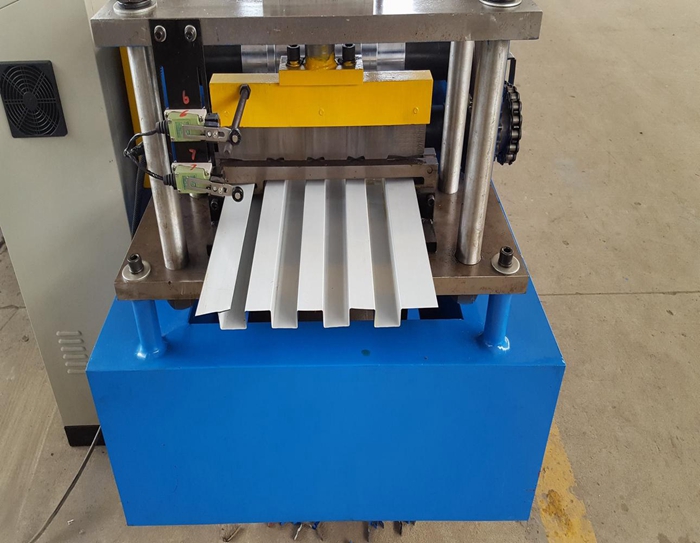Double Layer Board Roll Forming Equipment for Efficient Production Solutions
Double Layer Board Roll Forming Machine An Overview
In contemporary construction and manufacturing, the demand for innovative and efficient machinery has surged. One of the standout innovations in this realm is the double layer board roll forming machine. This advanced equipment is designed to produce two types of metal roofing sheets simultaneously, optimizing production processes and minimizing costs. This article delves into the features, advantages, and applications of double layer board roll forming machines.
Understanding Double Layer Board Roll Forming Machines
A double layer board roll forming machine is a sophisticated piece of equipment that processes metal sheets into specified profiles through a series of rollers. The unique feature of this machine is its ability to produce two different types of sheets—metal roofing and wall panels—using the same setup. The design includes dual stations, allowing the machine to switch functions without the need for extensive reconfiguration.
These machines are primarily constructed from high-grade steel, ensuring durability and stability under continuous operation. The rollers are precisely engineered to shape the metal sheets effectively, ensuring uniform thickness and quality across the production batch. Additionally, modern double layer machines are equipped with advanced control systems that allow for easy operation and monitoring.
Key Features
1. Efficiency The dual-layer capability enables manufacturers to produce different styles of sheets without investing in multiple machines. This not only saves space but also conserves energy and reduces labor costs.
2. Versatility These machines can handle a variety of materials, including galvanized steel, aluminum, and stainless steel. This versatility makes them suitable for various applications, from industrial buildings to residential homes.
3. High Production Capacity With the ability to produce a significant number of sheets per hour, double layer board roll forming machines meet the high demands of the construction industry. Automated features, like cutting and stacking, enhance production speed and efficiency.
4. Customization Manufacturers can tailor the machine settings to produce specific sheet profiles according to client requirements. Customizable parameters include sheet thickness, width, and profile shape.
double layer board roll forming machine

5. User-Friendly Operation Many models come equipped with touch screen interfaces that simplify the operational process. This allows operators, even those with minimal technical expertise, to manage the machinery efficiently.
Advantages Over Traditional Machines
When comparing double layer board roll forming machines to traditional single-layer systems, the advantages become clear. Firstly, the ability to produce multiple profiles reduces the investment needed for multiple machines, while also decreasing the physical footprint of production facilities.
Furthermore, these machines yield less waste as they can produce sheets more precisely and efficiently. In terms of return on investment (ROI), the dual functionality greatly enhances production capabilities without significantly increasing costs.
Applications
Double layer board roll forming machines are broadly utilized in various industries, including
- Construction They are essential in producing roofing sheets and wall panels needed for commercial and residential buildings. - Infrastructure Used for the production of components for warehouses, factories, and agricultural buildings, they contribute to creating durable structures. - Manufacturing These machines are needed for producing panels that are essential for the manufacturing of HVAC systems and other industrial equipment.
Conclusion
In summary, double layer board roll forming machines exemplify the innovation and efficiency that modern manufacturing demands. With their ability to produce multiple sheet profiles from a single machine, they stand out as a valuable investment for manufacturers aiming to enhance productivity while reducing costs and waste. As the construction and manufacturing sectors continue to evolve, embracing such technology will be crucial for businesses looking to remain competitive and responsive to market demands. The future of construction may well depend on efficient, versatile machinery like the double layer board roll forming machine, which is leading the way towards a more sustainable and cost-effective manufacturing process.
-
Roof Panel Machines: Buying Guide, Types, and PricingNewsJul.04, 2025
-
Purlin Machines: Types, Features, and Pricing GuideNewsJul.04, 2025
-
Metal Embossing Machines: Types, Applications, and Buying GuideNewsJul.04, 2025
-
Gutter Machines: Features, Types, and Cost BreakdownNewsJul.04, 2025
-
Cut to Length Line: Overview, Equipment, and Buying GuideNewsJul.04, 2025
-
Auto Stacker: Features, Applications, and Cost BreakdownNewsJul.04, 2025
-
Top Drywall Profile Machine Models for SaleNewsJun.05, 2025








